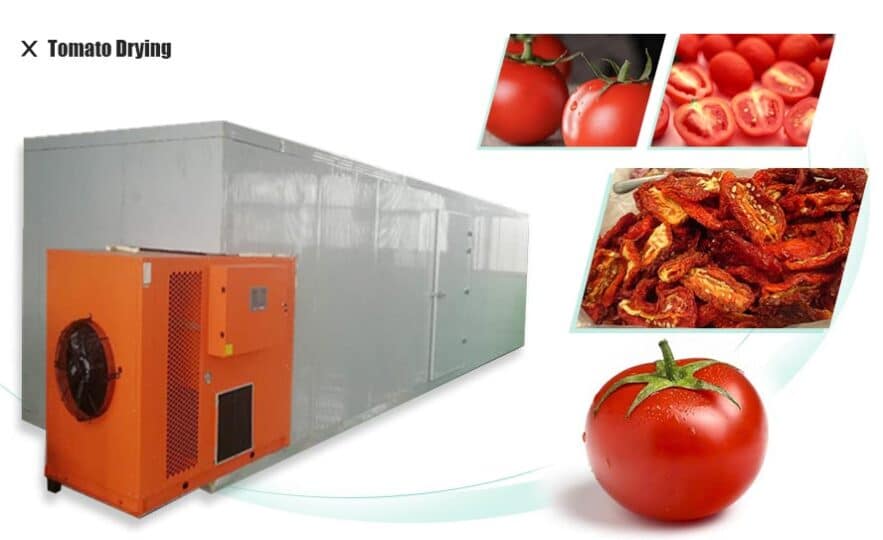
In the vegetable harvest season, once there is a problem of slow sales or continuous rainy weather, a large number of vegetables will rot because they cannot be kept fresh, causing considerable economic losses to the farmers. For this reason, planting farmers dry and dehydrate the vegetables and sell them as dried vegetables. The dehydrated vegetable processed products have low water content and can effectively inhibit the activity of microorganisms and enzymes in the tissues, thus prolonging the storage period, reducing the volume, reducing the weight, and facilitating storage and transportation.
How to dry the vegetables?
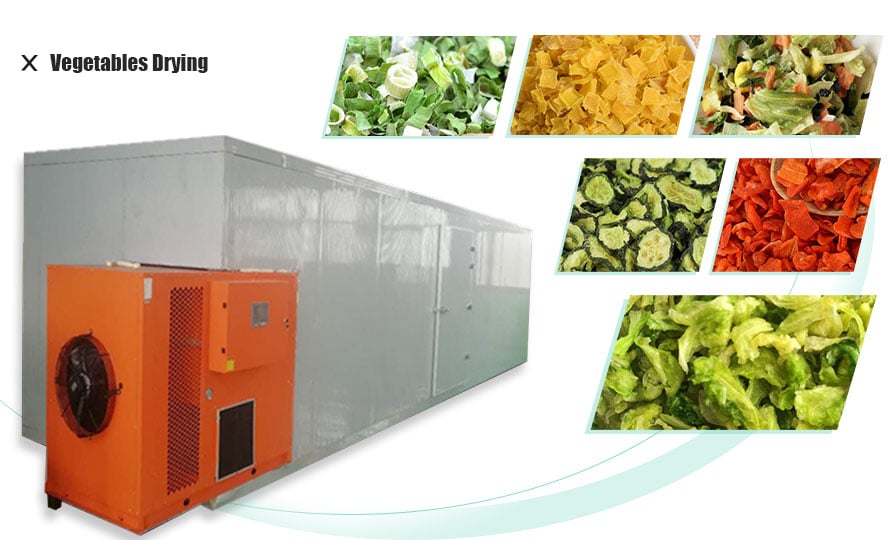
Generally, the moisture content of fresh vegetables is generally around 70%-90%, while the moisture content of dehydrated vegetables or dried vegetables after drying is around 6%-8%. At present, the drying methods of dehydrated vegetables mainly include natural sun drying and artificial drying. Natural drying is economical, but it is easily affected by the weather, and the drying quality is not guaranteed, especially the color of vegetables, and it is also prone to insects in later storage. With the development of technology, more and more vegetable growers choose air-energy heat pump dryers to dry vegetables. The vegetable dryer produced by our company adopts air energy heat pump for heating, adopts medium and low-temperature drying, and can set multiple time periods to dry vegetables at different temperatures. The dried vegetables have a good appearance, beautiful appearance and natural color, high-quality vegetables.
Ten kinds of vegetable drying process
Most dried vegetables need to maintain their original natural color and beautiful appearance. Drying needs to be based on different stages, different times, and different temperatures. During the drying process, the humidity in the drying room needs to be controlled to get high-quality dried vegetables. Today, I will give you a brief introduction to the drying process of several kinds of vegetables.
Mustard drying process
Mustard greens are generally divided into two processes.
Type A: Clean the fresh mustard directly and put it directly into the tray of the drying room;
Type B: high-temperature curing and color protection before drying. The dried mustard greens dried in this way are of good appearance and bright in color, which is close to the color before drying.
Mustard greens should be dried in multiple periods of time, with different temperatures and humidity. In the early stage, it is necessary to strengthen the dehumidification and reduce the moisture to 60-70% dry. And then gradually increase the drying temperature, and it can be heated to 70-75% in the later stage. This method can shorten the drying time.
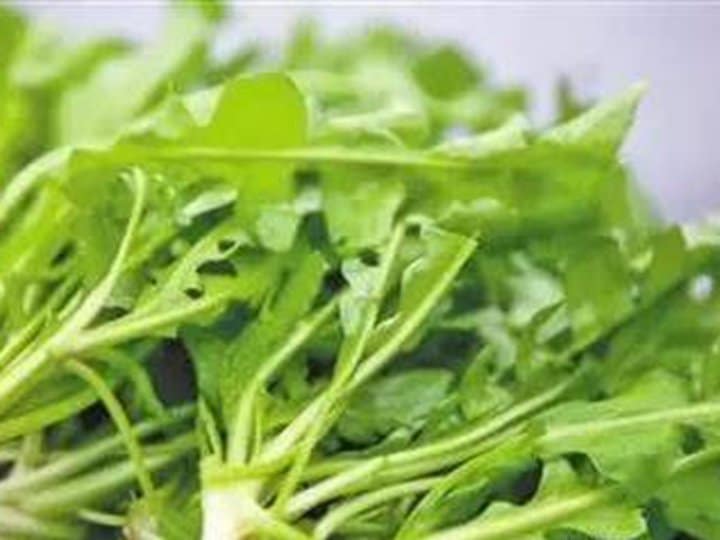
Watercress drying process
The moisture content of fresh watercress is about 90%, and the moisture content required for drying is 13%. The entire drying process is about 15 hours, and the temperature is about 50-65 (adjustable), uniform temperature and humidity, and uniform airflow.
The whole drying process can be roughly divided into two stages:
Stage 1: Increase the temperature of the drying room by 40-45, and increase the air volume for about 5 hours, mainly to bake the moisture of the watercress and remove it;
Stage 2: The temperature of the drying room reaches 50-65, and the dehumidification is combined with the dehumidification system until the product is dried to the target moisture content, and the time is about 10 hours.
The drying of watercress, scientific material placement and the circulating air flow design of the drying room are the key points. Doing a good job can shorten the drying time and achieve energy-saving effects; it can also improve the drying quality!
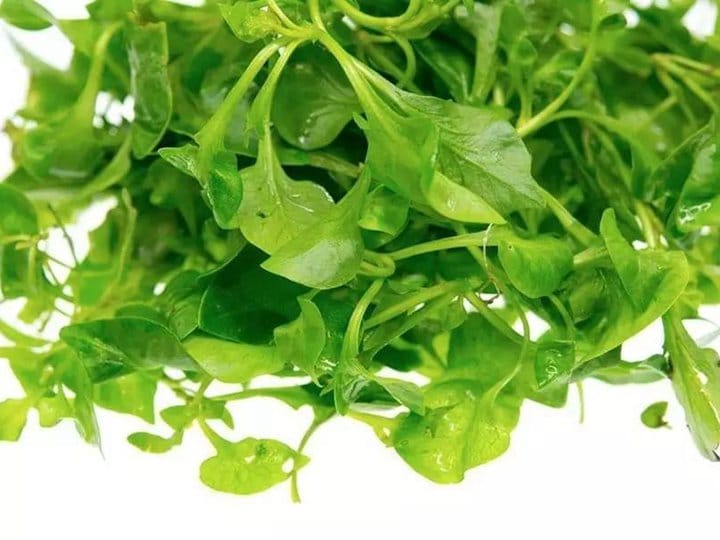
Cabbage drying process
- Material selection: Choose cabbage varieties with thick leaf stems, so that the yield will be higher, and at the same time, varieties with relatively high solids and sugar content, pick out rotten vegetables and raw materials for diseases and insects.
- Blanching: Blanch in 100 boiling water for 2 to 3 minutes. Add a small amount of baking soda to the blanching water to make the blanching water slightly alkaline.
- Dry: The natural drying method can be used, that is, dry in the sun. It takes too long and the quality is not guaranteed. Using hot air drying, the advantage is that the time is short and the quality is good, and the water content is 12-13% under 65-70.
- Soften: The freshly-baked dried cabbage has a low moisture content and is not uniform. If it is packaged immediately, it will cause a high rate of breakage. It has to go through the softening stage, that is, place it at room temperature or cover it for 2-3 days before proceeding to the next process.
- Organize: Choose graded packaging. In order to reduce the volume of dry products, sorting, grading and compression should be carried out before entering the packaging process, and sealed packaging should be carried out to avoid moisture absorption.
- Storage: Storage of dry products should comply with low temperature and low humidity environmental conditions. Otherwise, its storage period or shelf life will be shortened.
- After the above treatment, the dried cabbage has white stems and dark green leaves.
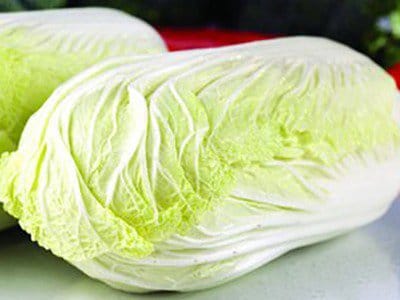
Lettuce slice drying process
- Cut off the roots and leaves, peel off the skin;
- Slice, about 5mm thick;
- Blanching, blanching with 90% water for about 2 minutes;
- Add 1% salt and stir, soak for 30 minutes;
- One-time drying, the drying temperature is set to 70-75, and the drying time is 2 hours;
- The second drying, the drying temperature is set to 60-65, and the drying time is 3 hours;
- Cooling, de-drying, inspection and storage.
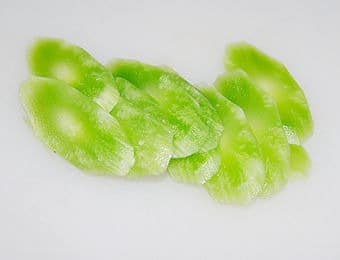
Bitter melon slice drying process
- Wash the bitter gourd and slice it, about 0.5cm thick.
- Put it into the vegetable drying room, set the drying temperature to 40-60, and the drying time to 8 hours.
- After drying, seal it as soon as possible to prevent deterioration from moisture.
- If it becomes soft due to dampness, put it back in the machine and dry for another 10 minutes to recover.
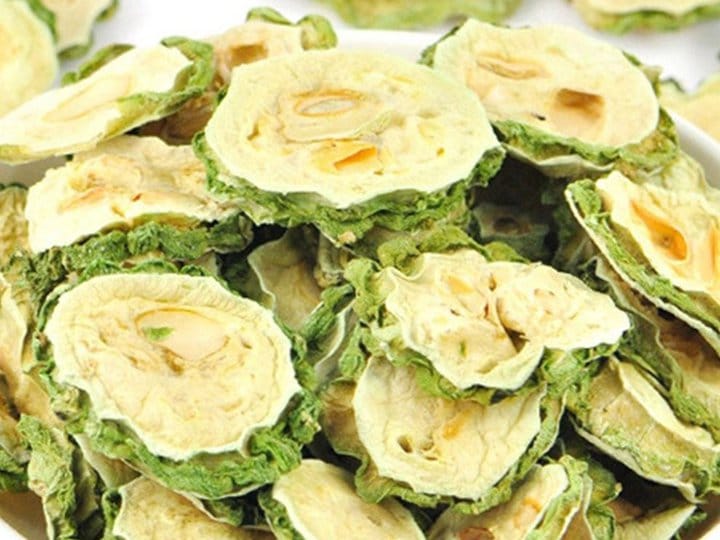
Tomato drying process
Garlic slice drying process
- Peeling garlic: Manually or using a garlic peeling machine, the garlic cloves are naturally peeled without damage, and then the garlic cloves are cleaned.
- Slicing: Use a slicer to slice the garlic cloves. Generally, the thickness of the garlic slice is 2mm, and the retention rate of allicin is 50-65%.
- Rinsing: When cutting garlic slices, the cross-section of the garlic slices will have gummy sticky juice. At this time, add water and rinse until the juice and impurities adhering to the garlic slices are cleaned, and the water is drained.
- Garlic slice drying: Spread the garlic slices evenly on the 304 stainless steel material tray, control the temperature at about 55-60°C, and bake for 6-8 hours. During the drying process, pay attention to the drying of the garlic slices in the drying room, and the amount of hot air and moisture exhaust should be stable. When the garlic is dried in the later stage, because the garlic fibers are dense and the liquid in the garlic slices is thick, the moisture migration and evaporation of the garlic slices become slow until The garlic slices are dried to a moisture content of about 4-6% to complete the drying. During the drying period, the time and temperature must be strictly controlled to avoid excessive drying time and high temperature, which will damage the color, appearance and nutritional value of the garlic slices and affect the quality of the garlic slices.
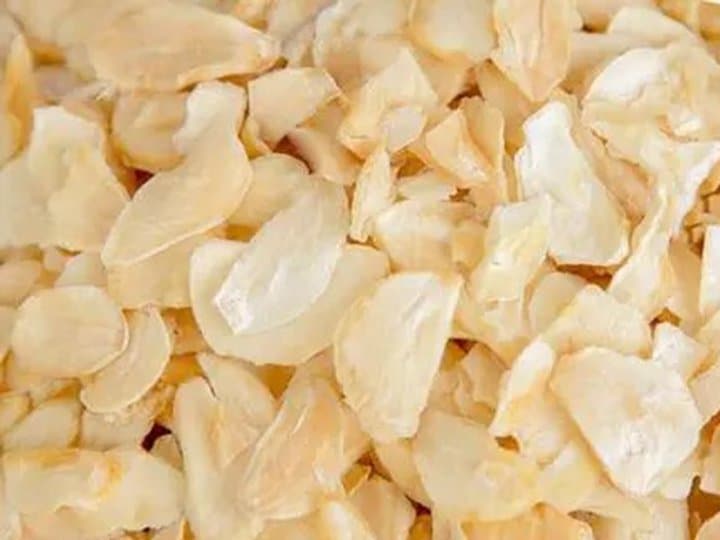
Chili drying process
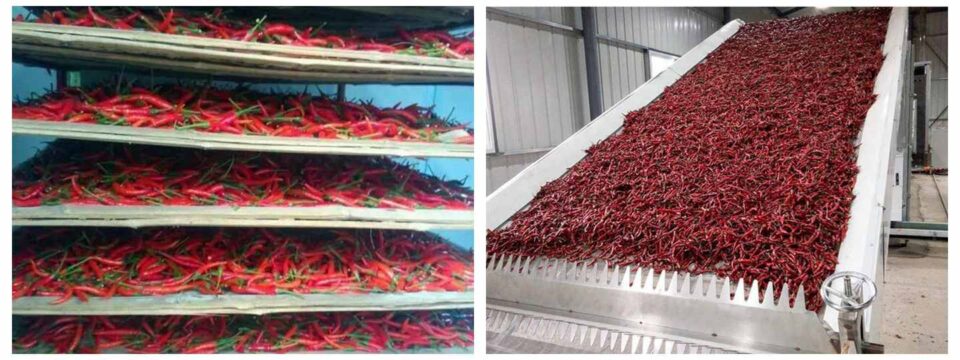
Radish sticks drying process
- Material selection and cleaning: Choose fresh radishes with regular shapes, clean the surface of the radishes, and drain them out.
- Softening treatment: Put the dried white radish into salt water with a weight concentration of 10% and soak for 48-72 hours to obtain softened white radish.
- Spread the radish pieces evenly in the stainless steel tray, put them into the pallet truck and push them into the baking room, and dry them at different temperatures in different periods at a temperature of 60°C.
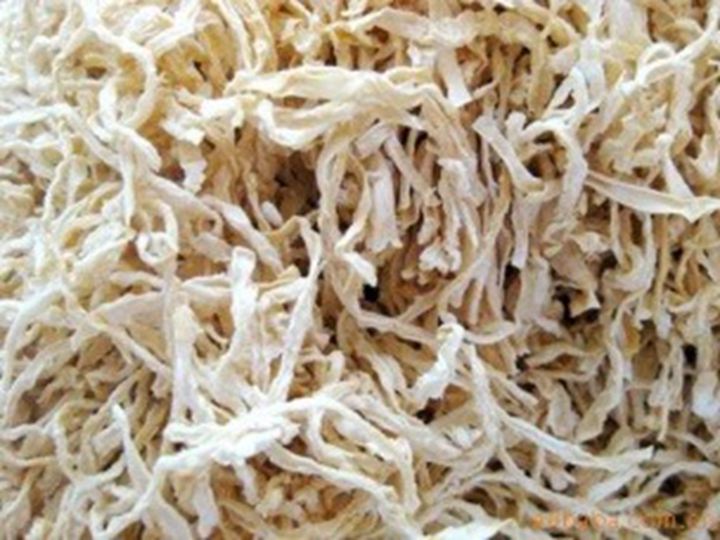
Winter melon drying process
Material selection-peeling, removing the flesh-cut into spiral winter melon slices-candied sugar-set rod-drying-moisture regain-packaging
- Material selection: Choose a large, thick, thin, and dense green-skin winter melon.
- Peel and remove the flesh: Use a planer to cut off the skin of the winter melon until the skin becomes white, then cut the winter melon into 5cm-wide circles, and dig out the flesh.
- Cut into spiral slices of wax gourd: cut the peeled and fleshy wax gourd rings into non-breaking spiral slices of wax gourd
- Put the spiral-shaped wax gourd slices into the basin, add sugar and sugar for 2 hours, and then drain;
- Put the candied winter melon spiral piece on the bamboo pole or 304 stainless steel hanging rod;
- Start the Guangzhou Danlai air energy heat pump dryer, set the drying temperature to 60-75, and increase the dehumidification at the same time, the entire drying time is about 8-12h;
- Moisture regain: The dried wax gourd slices are very crisp, and they will regain moisture in the air for 1-2h;
- Packaging: Use vacuum packaging bags to package the processed wax gourd slices with a long storage period.


